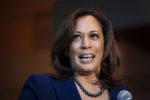 Featured – Race, History, and Memories of a Virginia Girlhood. Harvard University President looks back at the legacy of slavery and Jim Crow in her home state. By Drew Gilpin Faust / The Atlantic
Featured – Race, History, and Memories of a Virginia Girlhood. Harvard University President looks back at the legacy of slavery and Jim Crow in her home state. By Drew Gilpin Faust / The Atlantic
As the historian Edmund Morgan argued so powerfully nearly half a century ago, slavery and freedom were not at odds, but integrally intertwined, even mutually constitutive. It was the unfreedom of 40 percent of Virginia’s population that made the liberty of the rest imaginable as well as materially possible. A century separated the legal codification of slavery in Virginia and the beginnings of the revolutionary movement. The Founders had no memory of a society without bondage and no experience of a world where blackness and degradation had not been conjoined—where white supremacy and black inferiority had not been enshrined in both law and culture. The racial definition of American slavery placed yet another contradiction at the new nation’s heart, one that transcended the political difficulties of reconciling slavery and freedom. What did it mean to be human? Must Read
 White Women Slave Owners, Economics, and the Law. By Terri L. Snyder / AAIHS
White Women Slave Owners, Economics, and the Law. By Terri L. Snyder / AAIHS
In a treatise published in 1681, Anglican clergyman Morgan Godwyn, who had ministered to parishes in Virginia and Barbados, recounted the public flogging of an enslaved woman. Godwyn disliked the naked display of cruelty, but he was even more distressed by the presence of an English “mistress” among the crowd. “To the shame of her sex,” he wrote, this white and likely slave-owning woman stood alongside the “men and boys.” She did not deign to blush as she gazed upon the bondswoman who was stripped to the waist and whipped repeatedly. Read more
 A Confederate statue graveyard could help bury the Old South. By Jordan Brasher and Derek H. Alderman / The Conversation
A Confederate statue graveyard could help bury the Old South. By Jordan Brasher and Derek H. Alderman / The Conversation
An estimated 114 Confederate symbols have been removed from public view since 2015. In many cases, these cast-iron Robert E. Lees and Jefferson Davises were sent to storage. The idea of a Confederate monument graveyard is modeled after ways that the former communist bloc nations of Hungary, Lithuania and Estonia have dealt with statues of Soviet heroes like Joseph Stalin and Vladimir Lenin. Read more
 100 years ago, white mobs across the country attacked black people. And they fought back. By Christina Maxouris / CNN
100 years ago, white mobs across the country attacked black people. And they fought back. By Christina Maxouris / CNN
Thelma Shepherd was riding back to her Chicago apartment on July 27, 1919, when her streetcar came under attack. Black and white men hurled rocks at each other and at the passing vehicle. The 19-year-old who had recently left the South for a job in the bustling city didn’t know it, but she had witnessed one of the most violent clashes of the “Red Summer.” Chicago wasn’t the only city besieged by mob violence in the months after World War I. White gangs were eager to maintain Jim Crow-era laws but African-American soldiers returning from the war were demanding their rights and an end to second-class citizenship. Read more
 Despite Faulty Drugs & Racist Implementation, Trump Is Bringing Back the Federal Death Penalty. By Amy Goodman / Democracy Now
Despite Faulty Drugs & Racist Implementation, Trump Is Bringing Back the Federal Death Penalty. By Amy Goodman / Democracy Now
Attorney General William Barr announced Thursday that the federal government is resuming the death penalty after nearly two decades. The execution of five death row prisoners were immediately ordered beginning in December. We speak with Ruth Friedman, director of the Federal Capital Habeas Project, which coordinates representation, represents defendants and monitors federal death row. Listen here
 It Is Not Enough to Condemn Trump’s Racism. The nation’s ideals are under attack, and it is up to all of us to defend them. By Ilhan Omar / NYT
It Is Not Enough to Condemn Trump’s Racism. The nation’s ideals are under attack, and it is up to all of us to defend them. By Ilhan Omar / NYT
Throughout history, demagogues have used state power to target minority communities and political enemies, often culminating in state violence. Today, we face that threat in our own country, where the president of the United States is using the influence of our highest office to mount racist attacks on communities across the land. Read more
 Democrats and media condemn Trump’s racist Cummings attack. By Martin Pengelly and Edward Helmore / The Guardian
Democrats and media condemn Trump’s racist Cummings attack. By Martin Pengelly and Edward Helmore / The Guardian
In its response to Donald Trump’s racist attack on congressman Elijah Cummings, the editorial board of the Baltimore Sun said it “would not sink to name-calling in the Trumpian manner”. However, it did say, “Better to have some vermin living in your neighborhood than to be one.” Read more
 How White Democrats Moved Left. Racial equity has become the defining issue of the moment. By David Brooks / NYT
How White Democrats Moved Left. Racial equity has become the defining issue of the moment. By David Brooks / NYT
People are always changing their minds, day to day. But over the past 20-odd years one group has shifted to an astounding degree: highly educated white Democrats. In 1994, only about a sixth of Democrats who had gone to graduate school said they were consistently liberal. In 2015, more than 50 percent did. In 1994, only 12 percent of Democrats with college degrees said they were consistently liberal. Twenty-one years later, 47 percent did, according to the Pew Research Center. Read more
 Hiding from ICE, Hispanic Americans are strangers in our own land. By Stacy Torres / Wash Post
Hiding from ICE, Hispanic Americans are strangers in our own land. By Stacy Torres / Wash Post
On the first day of planned immigration raids across the country last Sunday, eerie quiet settled over Fruitvale, the heavily Mexican and Central American neighborhood where I live in Oakland, Calif. Fliers on lampposts in English and Spanish offered instructions on what to do if Immigration and Customs Enforcement came to the door. So far, only a handful of ICE arrests have occurred, but fear has already imposed its toll. Read more
 Black Women Are Leaders in the Climate Movement. Environmentalism, in other words, is a black issue. By Heather McTeer Toney / NYT
Black Women Are Leaders in the Climate Movement. Environmentalism, in other words, is a black issue. By Heather McTeer Toney / NYT
Despite stereotypes of a lack of interest in environmental issues among African-Americans, black women, particularly Southern black women, are no strangers to environmental activism. Many of us live in communities with polluted air and water, work in industries from housekeeping to hairdressing where we are surrounded by toxic chemicals and have limited food options that are often impacted by pesticides. Environmentalism, in other words, is a black issue. Read more
 This Supreme Court Case Made School District Lines A Tool For Segregation. By Elissa Nadworny / NPR
This Supreme Court Case Made School District Lines A Tool For Segregation. By Elissa Nadworny / NPR
The fight in Milliken was over who was responsible. Because the state had opposed an earlier desegregation effort, it seemed liable. But what about those dozens of booming, largely white suburbs? Should the federal courts do as they had done in the South for years: step in and force these communities to share their schools with black children? A divided court agreed, finding in a 5-4 ruling that if these suburbs weren’t actively hurting Detroit’s students, then they couldn’t be forced to help them either. Of the five justices in that majority, four had been appointed by Nixon. Ultimately, Detroit was told to somehow desegregate itself. Read more
 Busing Worked in Louisville. So Why Are Its Schools Becoming More Segregated? By John Eligon / NYT
Busing Worked in Louisville. So Why Are Its Schools Becoming More Segregated? By John Eligon / NYT
When she saw the news images of angry white mobs pelting school buses with rocks and bottles, Sherlonda Lewis was glad that she was not among the black students being bused to a school in a white neighborhood. It was 1975, and Louisville had initiated a court-ordered effort to integrate its public schools by busing students out of their racially segregated communities. Read more
 The student debt crisis has hit black students especially hard. Here’s how. By Annie Nova/ CNBC
The student debt crisis has hit black students especially hard. Here’s how. By Annie Nova/ CNBC
Nearly 85% of black bachelor’s degree recipients carry student debt, compared with 69% of white bachelor’s degree recipients, according to the Center for Responsible Lending, a non-profit in Durham, N.C. The average white student loan borrower owes around $30,000; the average black borrower owes closer to $34,000. White borrowers pay down their education debt at a rate of 10% a year, compared with 4% for black borrowers. Nearly 38% of all black students who entered college in 2004 had defaulted on their student loans within 12 years, a rate more than three times higher than their white counterparts, according to the Brookings Institute. Read more
 Kamala Harris Proposes Plan To Invest $60 Billion In Historically Black Colleges. By Alanna Vagianos / HuffPost
Kamala Harris Proposes Plan To Invest $60 Billion In Historically Black Colleges. By Alanna Vagianos / HuffPost
Of the $60 billion she plans to invest in HBCUs and other minority-serving institutions, Harris said she would put $10 billion toward school infrastructure to build classrooms, school labs and other facilities. The other $50 billion would be used to create a competitive fund at the Department of Education to support science, technology, engineering and math education at HBCUs. The competitive fund would go toward scholarships, fellowships and research. Read more
 Beyoncé’s ‘Brown Skin Girl’ is controversial because of its inclusionary vision of female beauty. By Mikki Kendall / NBC News
Beyoncé’s ‘Brown Skin Girl’ is controversial because of its inclusionary vision of female beauty. By Mikki Kendall / NBC News
Majority culture in America tends to portray skin color as a binary: You either have light skin or you have dark skin. The reality, though, is that skin color is a spectrum. To some extent, Beyoncé has benefited from light-skinned privilege, though she is still visibly of African descent in a majority white society. But what makes “Brown Skin Girl” so meaningful to dark skinned Black women in particular is that it celebrates not just brown skin in general but dark brown skin in particular, when anti Blackness has normally meant that, even in communities that are ostensibly battling the same issues around skin color, there is a clear bias specifically against the most visible Blackness. Read more
Visit our home page for more articles. And at the top of this page register your email to receive notification of new editions of Race Inquiry Digest. Click here for earlier Digests.
Use the buttons below to share the Digest in an email, or you can post to your Facebook, Linkedin or Twitter accounts.